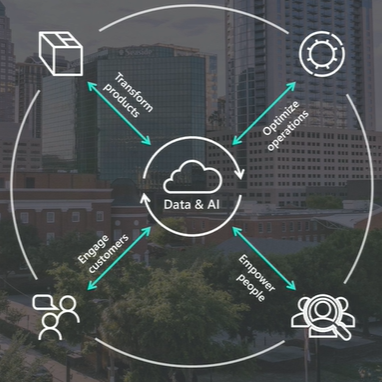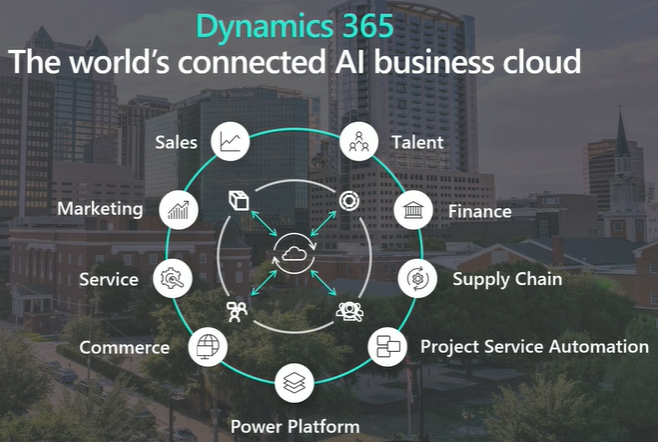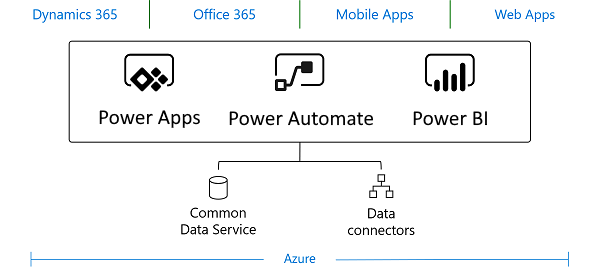How Dynamics 365 Works as Microsoft’s Digital Feedback Loop

Secure your Dynamics 365 CRM with our complete backup solution.
This is an Ignite the Tour session recap. You can read our other recaps below:
- How to Collaborate with SharePoint, OneDrive, and Microsoft Teams
- How to Control Roles in the Microsoft 365 Admin Center
- 3 Ways to Engage Your Organization with SharePoint, Stream and Microsoft Teams
- Tips for Building Modern Collaboration Solutions with Microsoft Teams and SharePoint
- Why Outlook Mobile is a MUST for Secure Enterprise Communications
- Quick Guide: How to Plan an Upgrade From Skype to Microsoft Teams
- 3 Keys to Effectively Managing Microsoft Teams in Your Government Agency
- How to Conduct Intelligent Meetings in Microsoft Teams
Business applications have historically sat at the top of the stack, functioning as their own assets and having minimal influence across the rest of a platform. However, when Microsoft decides to provide a business application, they want to bring all the tools that users are accustomed to together to foster a quick adoption and empower users.
The challenge in this is that the world has petabytes upon petabytes of data coming from everywhere. Our phones, website traffic, cars, and even things like smart refrigerators.

Over the years, organizations have segmented different types of data to support particular strategies with logic. For example, Sales would group their “Customer” data to build and support a strategy, while HR had their own “People” data related to the success of their specific role.
The trick is to pull all data into one application to understand how they each influence each other. This is what Microsoft calls the Digital Feedback Loop, and what Fasttrack Senior Program Manager Carlton Colter emphasized in his Ignite the Tour session “Dynamics 365 – Establish and administer a cross-organization business applications strategy.”

For instance, rather than JUST empowering sales to generate and win business, users can now seamlessly nurture that customer post-sale. Whether it be Marketing tracking which landing pages certain product owners are visiting or allowing your Customer Success team to see support ticket history to better understand customer pain points, this data synchronization is crucial.
This is where Dynamics 365 comes into play and exactly why Microsoft has architected it to ensure all of this common data is connected.

The reality of having all data in one location and seeing how they influence each other is the single most valuable asset to a strategic and proactive business (which is also why we have more data regulations than ever).
Once a business ties all data together into a “feedback loop,” all the cogs of a business can align to deliver a proactive sales and marketing strategy, foster customer retention, and so much more.
For example: If I, as a Customer Success Manager, can see my customer’s purchase history, Technical Support engagements, and marketing campaign attendance, I can craft an informed approach to ensure that customer is yielding a higher ROI. Naturally, this leads to increased customer satisfaction and, ultimately, a higher customer retention rate.
Security
Microsoft understands that security in the cloud is a common concern for most people who haven’t made the jump to Office 365 yet. In fact, they’ve made efforts to address these worries with things like their Common Data Service, Layered Security Approach, Sovereign Cloud, etc.

Microsoft’s security strategy and execution are motivated by many factors, some of which include compliance, global & local regulations, business demand, the technology available, and so on.
“Our strategy is trying to meet all guidelines at the same time. So while Europe needs to meet the GDPR, we want to make that security functionality available to the rest of the world,” Colter explains.
“We understand that cybercrime is real. We want to provide a cloud where we prevent cybercrime. We have our own lawyers around the world ensuring that these criminals are taken to justice when they try to break into not only our systems, but those of our customers as well.”
To learn more about this topic and Microsoft’s layered security approach, watch this recording.



